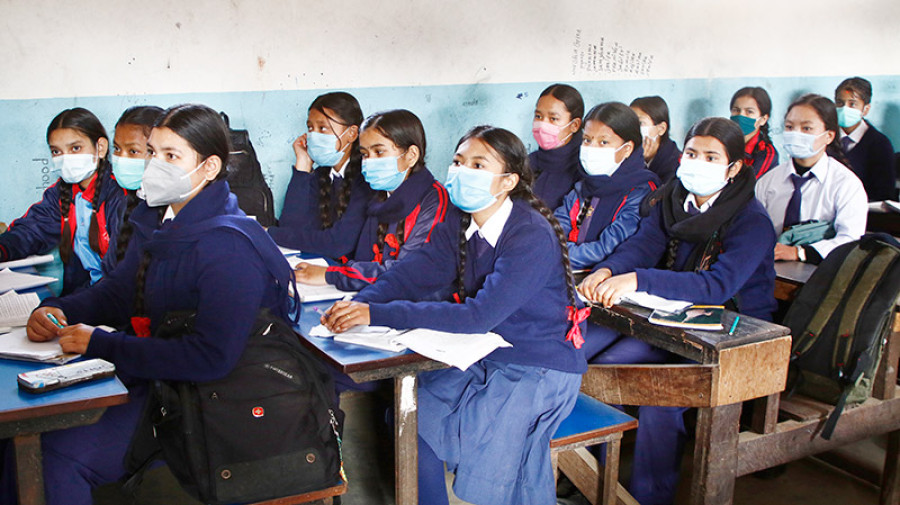Editorial
No permanent solution
The last thing students want to see is another shutdown.
As the second wave of the Covid-19 pandemic engulfs Nepal, we seem to be going back to square one. We are still keeping up our lackadaisical attitude vis-à-vis prevention and management of coronavirus transmissions, and it may just be a matter of time before public life comes to a complete halt. And it is the educational institutions that are going to feel the heat in the first round, as they have arguably become dreaded coronavirus hotspots of late. On Saturday, the Ministry of Health and Population recommended that the Covid-19 Crisis Management Centre enforce a shutdown of educational institutions for at least three weeks. That has not gone down too well with students, teachers, parents and educational institution administrators, but their voices may not be heard amidst the cacophony of yet another lockdown-style offensive against the virus.
Students and teachers have only just returned to their schools, colleges or universities after a long and tiresome gap. The last thing they would want right now is the shutting down of their classes. They have lessons to finish, exams to take, and an academic session to complete. Losing a significant part of the already truncated academic year is not an option anymore. Nine months is how long it took for schools to reopen last time. That is too long a duration for students who need to wrap up their courses and upgrade to the next level. It is especially punishing for tertiary level students who have to catch up with their peers across the world—after all, we are a small and yet significant part of the global educational system that incentivises competition and excellence.
To make up for the months-long closure of educational institutions, the government had, last September, reduced a third of the prescribed contact hours and curriculum at the school level and also extended the academic year by two months. School authorities say they still have a third of the coursework to finish. But the prospect of yet another closure is already looming large, leaving teachers, students and parents in a quandary: To continue with the physical mode of teaching or not, especially because the students, many of whom are below the eligible age for vaccination, are nowhere close to being immunised.
This concern would not have been so consequential had we been a little more imaginative and enterprising early on. We have been there and done that, and yet we are here, today, wondering how we will be able to conduct classes online in the event of a shutdown. Once the initial pandemic storm was over, we considered the calm that followed as a permanent solution. The first wave of the pandemic taught us enough about the impermanence of the traditional teaching-learning infrastructure. It taught us that we would have to adopt new technologies to make good in a post-pandemic world, and that we would have to bridge the digital divide to provide equal opportunities to every learner out there. And yet, we were not prepared for a second wave, were we?
Private school and college operators are rightly questioning the rationale behind shutting down educational institutions halfway through the academic year. After all, they have fees to collect, salaries to pay, and a timetable that requires them to move on to the next session. If the institutions are closed, they cannot do either of these things. The government more or less left them to fend for themselves. And so they collected whatever they could from the parents and paid whatever they could to the teachers. Both parents and teachers were thus left unhappy. The institutions will have to bring that same modus operandi to work once again. And that will not lead to a happy ending yet again.




 15.12°C Kathmandu
15.12°C Kathmandu












%20(1).jpg&w=300&height=200)

